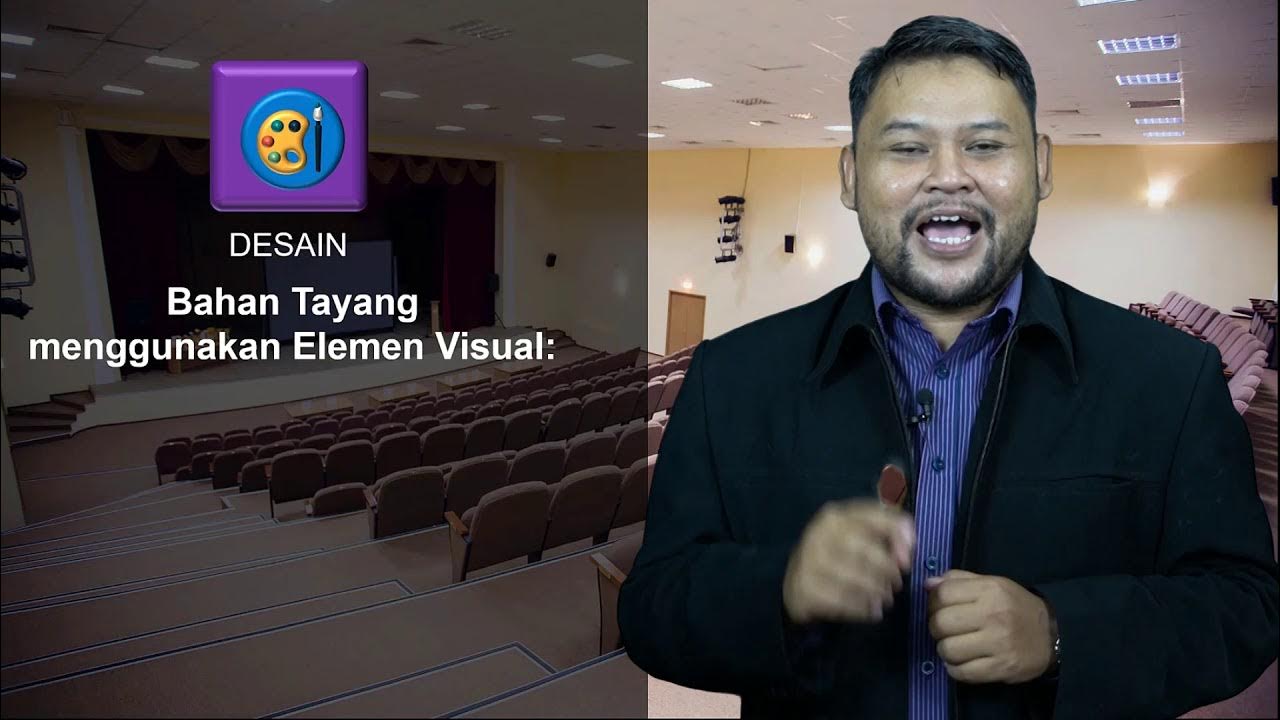5 Things Every Presenter Needs To Know About People
Summary
TLDRThis presentation highlights five essential strategies for creating more effective and engaging presentations. First, it emphasizes the importance of delivering information in 20-minute chunks to improve retention. Next, it suggests using multiple sensory channels—visual and auditory—to enhance learning. Non-verbal communication, such as body language and tone, plays a significant role in conveying your message. A clear call to action is crucial for motivating your audience, and finally, the speaker’s emotions are contagious, influencing audience energy and engagement. By applying these principles, presenters can create more impactful and memorable presentations.
Takeaways
- 😀 People learn best in 20-minute chunks, as seen in TED Talks. Break your presentation into smaller segments for better engagement and retention.
- 😀 Research shows that presentations over 20 minutes should include changes every 20 minutes, like a break or interactive activity.
- 😀 The use of multiple sensory channels (visual and auditory) in a presentation enhances understanding and retention. Ensure slides are simple and add value.
- 😀 Overcomplicated slides with too much text can distract the audience. Use visuals only when they help clarify your points.
- 😀 Non-verbal communication, such as body language and tone, plays a significant role in conveying your message. Analyze and improve these aspects.
- 😀 Paralinguistics (how you say things) can alter the meaning of your words. Record your presentation and assess your delivery for improvement.
- 😀 Always include a clear call to action at the end of your presentation to guide the audience on what to do next.
- 😀 People tend to mirror the emotions of the speaker. Show passion and energy for your topic to engage the audience emotionally.
- 😀 Smiling and expressing positive emotions can make the audience feel more connected to you and your message.
- 😀 If your presentation is longer than 20 minutes, be sure to incorporate changes or breaks every 20 minutes to maintain attention.
- 😀 Preparation is key: rehearse your presentation without slides and only add visuals if they truly enhance your message.
Q & A
Why are 20-minute chunks considered the optimal length for presentations?
-20-minute chunks are effective because they align with how people process and retain information best. Research and examples like TED Talks show that limiting presentations to this length helps audiences stay focused, engaged, and able to remember the material more effectively.
What should presenters do if their presentation exceeds 20 minutes?
-Presenters should consider breaking their presentation into smaller segments, incorporating activities, breaks, or even a change of topic to refresh the audience's attention and maintain engagement.
How do multiple sensory channels (auditory and visual) enhance a presentation?
-Using both auditory and visual channels helps reinforce the message. Visuals like photos, diagrams, and clear graphics can make the material more accessible and engaging, while audio maintains the flow of information. However, too much text on slides can overwhelm the visual channel and detract from the message.
What is the danger of using slides with too much text?
-Slides overloaded with text can distract the audience and diminish the effectiveness of your presentation. People tend to focus on reading the text rather than listening to the speaker, which can cause them to miss key points and reduce the overall impact of the message.
How important is non-verbal communication in a presentation?
-Non-verbal communication, including body language, facial expressions, and tone of voice, plays a critical role in how the message is perceived. It often conveys more meaning than the words themselves and can significantly influence the audience’s emotional and cognitive responses.
How can a presenter improve their non-verbal communication?
-A presenter can improve their non-verbal communication by recording themselves and analyzing their body language, facial expressions, and tone. This feedback allows them to identify areas for improvement and ensure their non-verbal cues align with the message they are trying to convey.
What is paralinguistics and why is it important for presenters?
-Paralinguistics refers to the study of how non-verbal elements like tone, pitch, and pace of speech influence communication. It is important for presenters because these vocal nuances can alter the meaning of their message, making it essential to be mindful of how things are said, not just what is said.
Why is having a clear call to action crucial at the end of a presentation?
-A clear call to action is essential because it directs the audience to take specific steps after the presentation. Without it, the audience may leave without knowing what to do next, which can undermine the impact of the presentation, especially when the goal is to raise awareness, encourage donations, or inspire change.
How do emotions impact a presentation?
-Emotions are contagious, and when a presenter shows enthusiasm and passion for the topic, the audience is more likely to mirror those feelings. A presenter’s emotional energy can keep the audience engaged, motivate them, and create a stronger connection to the content.
What should a presenter do if they want to ensure their emotions connect with the audience?
-A presenter should be authentic in expressing their emotions. If they are excited or passionate about the topic, they should let that enthusiasm show through their tone, facial expressions, and body language. This helps the audience feel the same level of engagement and interest.
Outlines

此内容仅限付费用户访问。 请升级后访问。
立即升级Mindmap

此内容仅限付费用户访问。 请升级后访问。
立即升级Keywords

此内容仅限付费用户访问。 请升级后访问。
立即升级Highlights

此内容仅限付费用户访问。 请升级后访问。
立即升级Transcripts

此内容仅限付费用户访问。 请升级后访问。
立即升级5.0 / 5 (0 votes)






